The Kvalsund ship - viking ship predessesor
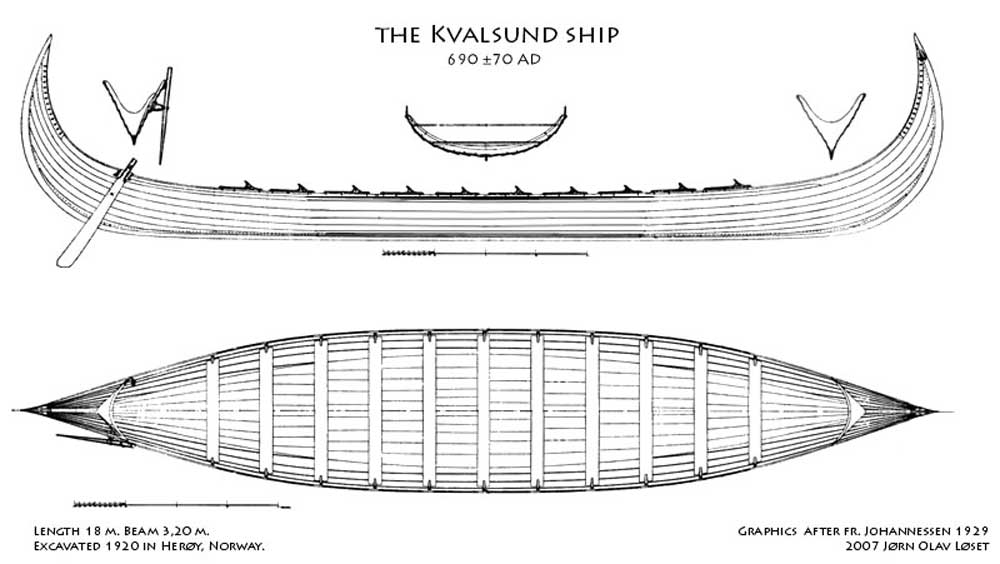
Illustrasjon etter ing. Fredrik Johannessen, noe omarbeidet. Han rekonstruerte skipet på 1920-tallet.
Diagram of the Kvalsund ship from 690 AD. This ship is a predessor of the viking longships. Diagram after Fr. Johannessen, 1929.
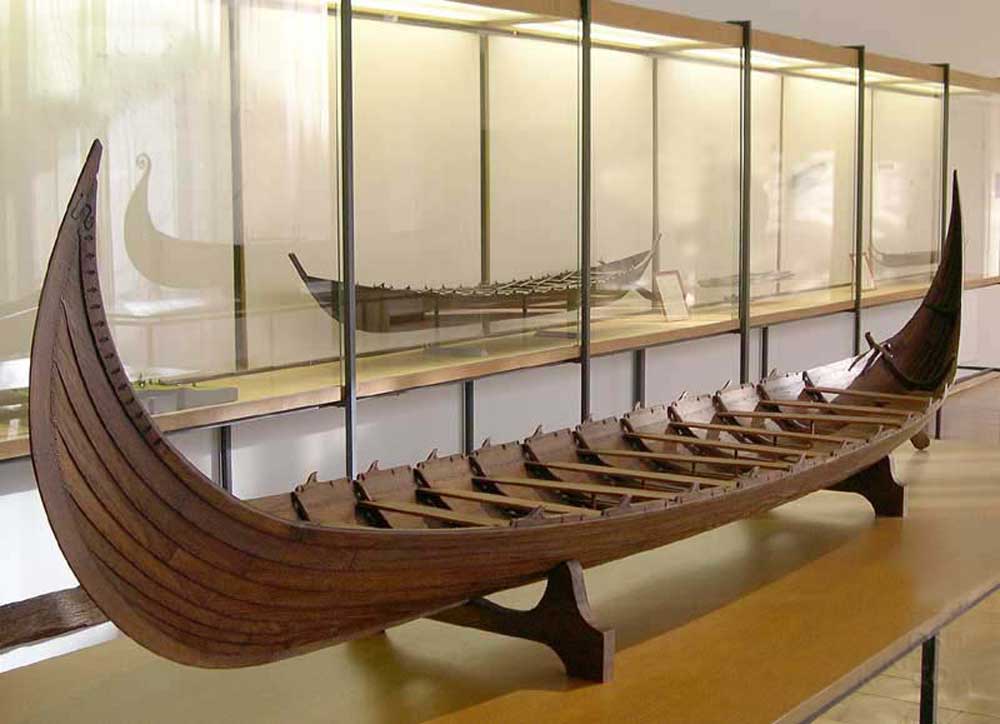
Modell av Kvalsundskipet i Bergen Sjøfartsmuseum.
Downscaled reconstruction of the Kvalsund ship. Exhibited in Bergen Maritime Museum.

Originale båtdeler av Kvalsundskipet; del av en bordgang øverst, sideroret, en åre, del av kjølen nederst.
Parts from the excavations of the Kvalsund ship. From top: part of a strake, the side rudder, an oar, part of the keel.
|
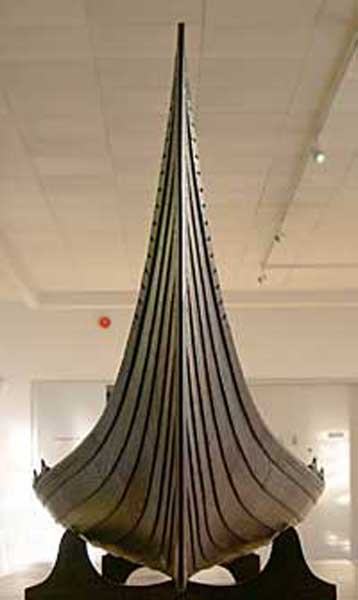
|
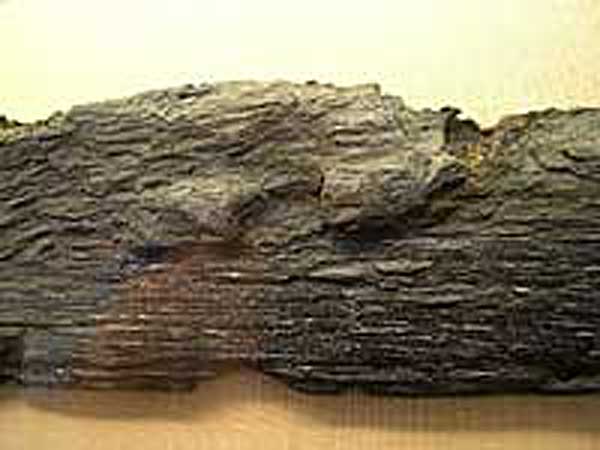
|

|
|
Stavnen - The stem
|
Surringsklamp - Lashing cleat
|
Stavnornament - Ornament
|
The Kvalsund ship
Two boats were found in Herøy, Møre and Romsdal, Norway in 1920.
They were built around 100 years prior to the Viking age. The Kvalsund find is radiocarbon dated to 690±70 AD.
The larger boat: Length 18 m, width 3.2 m. Rowing boat for 20 men with 10 pairs of oars. The oars were supported by kabes mounted along the gunwhale. Exterior rudder oar, reinforced bottom plank forming a shallow keel with Y-shape. Simple carvings on the stem and stern.
In shape this boat was clearly more round than the Nydam boat, thus capable of carrying more load. The frames were attached with wooden plugs, the clamps were lashed. The rudder blade was attached to a rugged wooden knob on the right side at the rear, just as on the later viking ships. However, no traces of any mast have been found, but the boat might have been able to carry a sail.
The ribs were lashed to the strakes.
This boat was fast and easy to row. Many norwegian researchers believe that this ship was used as a seremony ship for domestic traffic only, at least as long as it is interpreted as a rowing ship only. But it may have been rigged.
A fullscale replica of the ship is exhibited in the Sunnmøre museum in Aring;lesund, Norway.
The smaller boat was a færing 9,55 m long, 1,50 m wide, and with a styri (rudder) and two pairs of oars. The hull had 5 strakes of oak on each side, and ribs of pine. A reconstruction built by Sigurd Bjørkedal is located at Herøy Coastal Museum, in Herøy, Sunnmøre.
The original parts are exhibited in Bergen Maritime Museum, University of Bergen, Norway.
No certain mast block or keelson was present in the Kvalsund find, but two of the items in the find list from 1929 report are specificly labeled as possible fragments of a mast. Haakon Shetelig was pretty convinced that these poles were a broken mast. The longest piece is a 5 meter long round pole of pine, broken off in both ends. The thinner end is 68 mm thick and the other (lower) end is 115 mm (jfr. funnlisten nr 26). This piece is seen in connection with a 80 cm long pole of pine, 12 cm thick (nr. 90). The ends are detoriated and deformed by chopping, so they don’t match perfectly in their preserved state. But, to quote Shetelig from the excavation report, “if the fractures are joined, then the mast is preserved in a length of at least 5.75 metres” . Given that these pole fragments really is a mast, it may have measured 6 to 8 metres. The tapering of the pole matches well to the measures of a mast, and pine is frequently used for masts in norse crafts.
Another argument for interpreting the Kvalsund ship as a rigged vessel, is the very shape of the hull. The tall rising stem and stern are directly contradictory to a practical design for a rowing ship. A light vessel for rowing is usually designed with a moderate to flat sheer to minimize air resistance in head winds and to reduce the drift in crosswinds. For a sailing craft rigged with a small square sail for running in downwinds as the primary field of use, the situation would be quite opposite.
Kvalsundfundet", Shetelig og Johannessen, 1929.
"Askekaumlbaten", Ph. Humbla, Goteborg, 1934.
"Jernalderen i Norge", Bergljot Solberg, Cappelen, 2000.
Jorn Olav Løset, updated March 15. 2009.
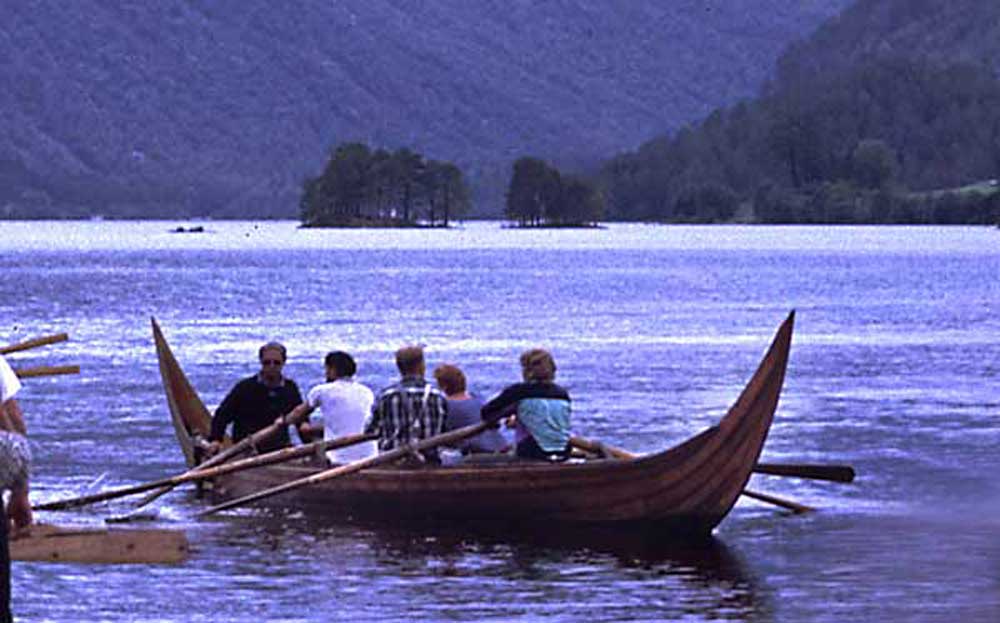
Kopi av den lille Kvalsundbåten. Fra et rostevne på Bjørkedalen i 1992. Undertegnede i rutete skjorte.
Replica of the smaller Kvalsund boat. From the lake in the Bjørkedalen valley, Norway. Photo: Tove Nilsen Løset.
- Йохен фон Фиркс «Суда викингов», здесь вы можете скачать книгу, идентичную оригиналу.
- Кораблекрушение Ormen Friske в 1950 году
*** |

